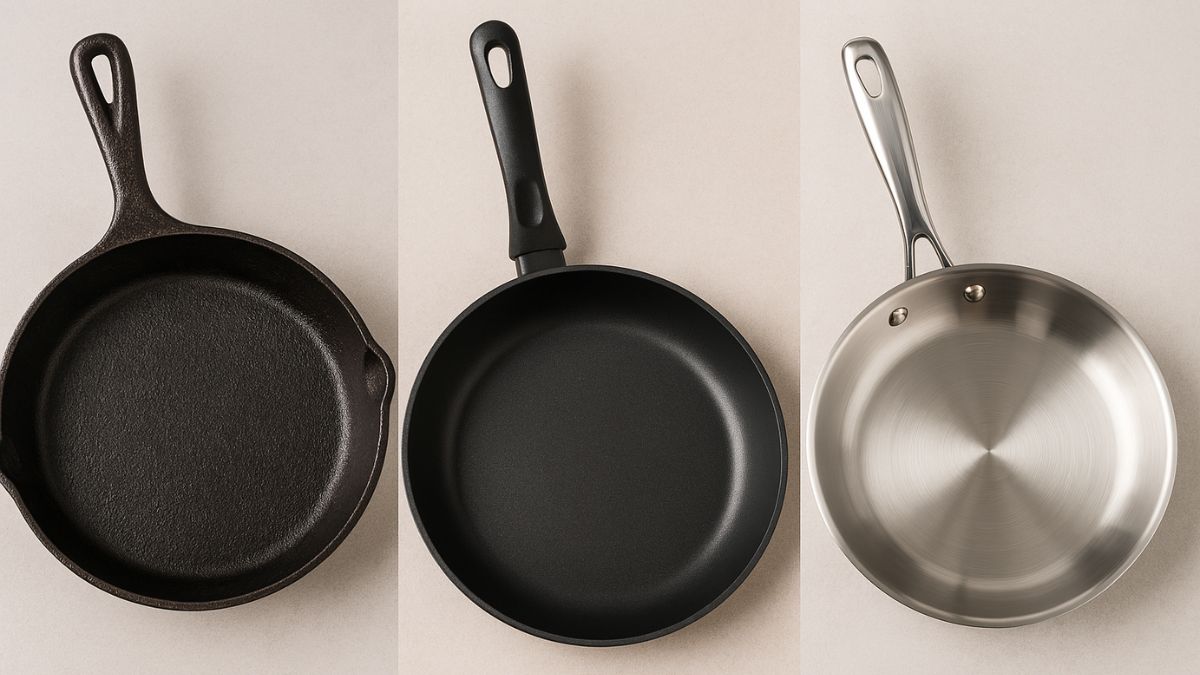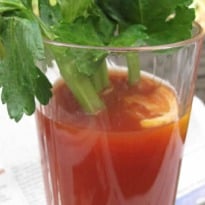Are bloody marys the only thing to drink before lunch, or a weird hybrid of soup and snifter? Do you prefer yours with gin or vodka - or neither - and why do we order them on aeroplanes?
Just before Christmas, I found myself in the company of Neil and Christine Hamilton, a couple of MasterChef critics and a tanned gentleman who apparently sits in judgment on Strictly Come Dancing, in a beautiful art-deco bar just off Piccadilly in London. We were watching 10 thrusting young bartenders vying with each other to make the best bloody mary, in a competition sponsored by the Louisiana hot sauce giant Tabasco.
I couldn't help thinking such a noble drink deserved a little more in the way of celebrity fanfare, but as Tuesday afternoons go, it was a pleasingly surreal one. There were two rounds: one in which the competitors made a traditional bloody mary, and a second where they were allowed a freer rein to muck about with foams and smoke and the like, all of which left me more in love with the classic drink than ever. Garlic-infused vodka, which featured in the winning alternative recipe, may be clever, but it would certainly rank very high in a list of bad ideas for the morning after the night before, which is, along with the airbourne aperitif, surely the moment a bloody mary was made for.
Although I like the idea of being someone who can, when the occasion demands, put away a cocktail at any time of day, the truth is that drinking buck's fizz or marmalade martinis at breakfast makes me feel a wee bit woozy. Bloody marys, conversely, have an almost invigorating effect. It's probably a combination of their wholesome tomato juice and rejuvenating kick of spice - plus, perhaps, a happy vision of myself relaxing in shades and a sundress at Don Draper's Sunday brunch party.
As with any classic worth its celery salt, there are as many variations on a bloody mary as there are stories behind the name. Most are pretty tasty, but which one's bloody best?
I say tomato ...
Tomato is, obviously, a non-negotiable element of a bloody mary. I have had colourless versions in the past but, while 'tomato water' might be the very essence of the fruit, without the pulp the drink lacks the requisite richness. I always think of a bloody mary as halfway between a cocktail and a snack, which means it needs to be brick red and satisfyingly thick.
I'm with Victoria Moore, author of the marvellous How to Drink, on the importance of spending a little bit of money on your tomato juice: it's the principal ingredient, so it makes no sense to opt for a watery, bland value version. If you live somewhere where you get a good supply of really ripe tomatoes, you could even make your own in season, although personally I'm not convinced it's worth the effort.
All the recipes I try use plain old tomato juice, but Margot Henderson has a trick up her sleeve in her book You're All Invited: she mixes the juice with fresh horseradish, English and Dijon mustards, Tabasco, Worcestershire sauce, pepper, lemon juice and celery salt and leaves it to infuse for a week before use. Her bloody marys are intensely rich and tomatoey, with no individual ingredient predominating: delicious, but actually slightly overpowering at breakfast time.
I do like the way the ingredients have married though, so I'm going to leave mine to settle for half an hour - not long enough to put you off the idea (rarely do I plan my bloody marys a week in advance), but certainly enough time to make a difference to the finished drink.
Alcohol
Bloody mary aficionados are fiercely divided on the subject of gin versus vodka (strictly speaking, the first turns the drink into a red snapper, which I happen to think answers the question). Though I favour the first for a martini, I reckon the cleaner flavour of vodka works better with the hullabaloo of other ingredients in a bloody mary - as indeed do the authors of almost every recipe I try, save for that from the Hawksmoor recipe book, which calls for a good gin infused with fresh horseradish. (NB this is for their bloody mary no 7 - for the classic no 4, the steak people use vodka instead.) Whatever the spirit, the horseradish infusion lends a pleasantly peppery kick, without the slight harshness that I find comes with adding the grated stuff direct.
Many moons ago, I drank an extraordinarily good bloody mary in a bar in Bristol, and discovered the barman's secret was the terminally unfashionable local tipple, Bristol cream sherry. It adds a subtle sweetness and richness to the drink and, as it turns out, it's not actually that original: Lindsey Bareham rinses the glass with sherry in her Big Red Book of Tomatoes, while Victoria Moore specifies bone-dry fino or the slightly fuller amontillado sherry, saying that for her: "It's the sherry that really makes [the drink], bridging the gulf between the hot but clean spirit and the fruity tomatoes."
Spices and greenery
Certain elements of a bloody mary are non-negotiable: Worcestershire sauce, some variety of hot sauce (generally Tabasco), lemon juice, salt and pepper. Add tomato juice and vodka and you'll have yourself a very decent drink. As I discovered at the bloody mary challenge, this isn't a drink to be mucked around with - New York chef April Bloomfield adds lemon zest, for example, in her book A Girl and Her Pig, which gives a slightly bitter edge. Henderson's mustards add an unwelcome hint of salad. Grated fresh horseradish is too harsh. Celery salt is the one luxury I'll allow: the intensely savoury note is welcome with the sweet sherry and tomato juice. A celery stick makes an excellent stirrer, but there'sno need to put the leaves in the glass itself, as Bloomfield does: a tangled mass of vegetation just interferes with a civilised drink.
To ice?
The bloody mary is an American drink, so it's perhaps no surprise that most recipes call for it to be served over ice - they can't get enough of the stuff. But as a bloody mary tends to be sipped rather than glugged, the melting ice fatally waters down your carefully made cocktail.
Victoria Moore suggests shaking a bloody mary over ice if making the drink in small quantities, but this is an even worse idea: shaking tomato juice just makes it fluffy and foamy. Much better to do as DeGroff suggests in the Craft of the Cocktail and "roll" the drink, or pour it back and forth between two glasses, instead. This mixes and allows you to look like a skilled mixologist - many of the competitors in the bloody mary challenge had perfected the trick of pouring from some height, which is probably something that ought to be practised in private with water before it becomes your party trick. Rolling is impractical if you're making a jug, rather than individual drinks, however: instead, stir well, and make sure both your tomato mix and your vodka are well chilled before use to ensure maximum invigoration.
The perfect bloody mary
Serves 8
300ml vodka
5cm piece of fresh horseradish
1l good tomato juice
2 tsp tabasco
2 tsp worcestershire sauce
1 tsp celery salt
1 lemon, cut into wedges
2 tbsp amontillado or cream sherry (cream is sweeter)
Celery, to serve (optional)
Cut the horseradish into chunks and stuff them into the vodka. Seal and leave to infuse for a day, then strain and discard the horseradish.
Mix together the tomato juice, Tabasco, Worcestershire sauce and celery salt and briefly squeeze each lemon wedge into the jug, leaving some juice in each. Season well with black pepper, and check the spice level for your taste, adjusting if necessary. Drop the wedges into the jug and stir together well. Cover and chill for at least 30 minutes.
Pour the vodka and sherry into the jug and stir well with a celery stick. Seize the day and serve immediately.
Bloody mary - is it the only thing to drink before lunch, or a weird hybrid of soup and snifter which is best left in the 1960s? Do you prefer yours with gin or vodka - or neither - and just why do so many of us order them on aeroplanes?
The perfect bloody mary. Photograph: Felicity Cloake for the Guardian












